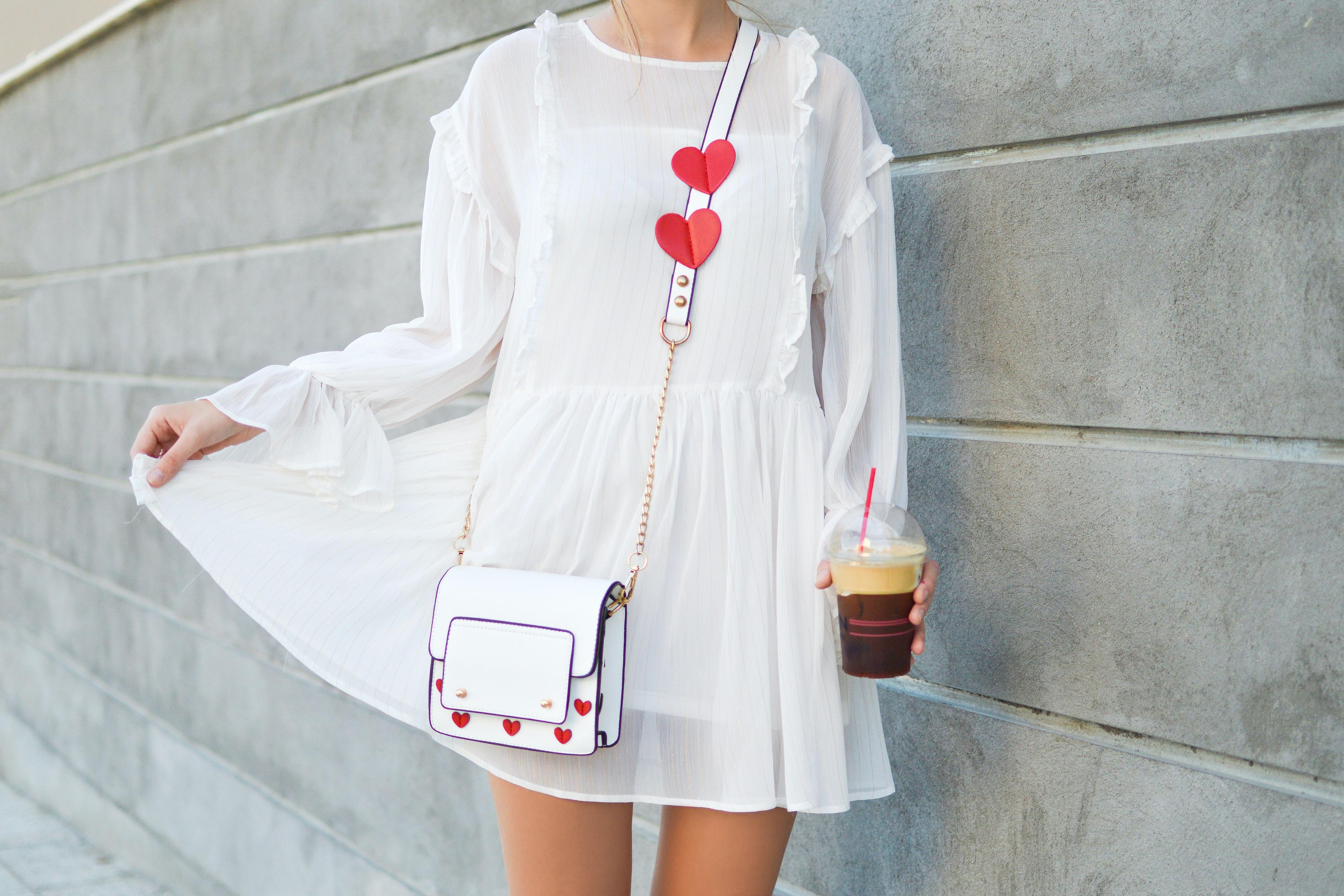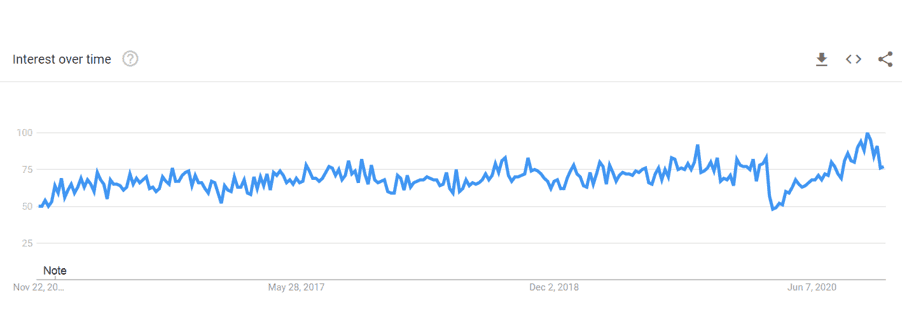
How can we be more aware and use fewer clothes?
The global market in second-hand clothing is growing dynamically. Back in 2012 its value was estimated at “only” 11 billion dollars, while for the 2020 forecast they are talking about 33 billion and by 2024 the growth should reach about 64 billion dollars.[1] As with the majority of businesses, things have become more complicated due to the COVID-19 pandemic; however the data related to this shows a very strong rebound after the first wave of pandemic at the beginning of the year:
https://www.statista.com/statistics/826162/apparel-resale-market-value-worldwide/

Source: https://trends.google.com/trends/explore?date=today%205-y&q=used%20clothes
The second-hand clothing market is emerging as an interesting topic, one which is definitely worth our attention, not only in the context of communication but also when it comes to the transfer of sales on-line. Monika Szyszka, who is responsible for social media strategy at MakoLab, has examined this issue in much greater detail.
A thorough wardrobe clear-out? Or maybe the regular replacement of all your clothing? If you’re wondering how you can limit the purchase of new clothes, both to take care of the environment and of the condition of your wallet, a quick review of the clothes-selling applications below is all you need.
An application? How about a new function for a website, namely Zalando Pre-Owned?

Zalando Pre-Owned is becoming real competition for those applications intended to sell clothes – the sales procedure has never been easier and more convenient for everyone.
Right next to the tab for special sales on Zalando you can find a tab hiding a real mine of second-hand clothing that…at first sight does not differ much from the clothes presented in other sections. This is because Zalando takes responsibility for selling second-hand clothing – it takes care of the sale, delivery and even taking the photograph. A logged in user may prepare “an exchange box” consisting of clothes already bought on the website – after choosing which articles qualify for exchange, you are informed about the price offered for each item by Zalando – for the sake of experiment I checked how much my used bag is worth – 20% of the standard price, shoes – 5%, leggings – 30%. While creating your box, you can add articles offered by Zalando – you just have to take a picture of an item (preferably with a light background) and price the product. Before starting a review of your wardrobe, it is worth getting acquainted with the exchange terms and conditions that clearly state which products can be exchanged. Precisely – to be exchanged, not sold. The sum obtained from the exchange of clothing goes to a gift card you can use on the Zalando website. If you don’t want to buy anything, you can support one of the charity organisations or donate clothes to the clothing bank.
If you haven’t heard of this new Zalando function yet, then no wonder – Zalando decided not to additionally promote the Pre-Owned section – instead they just placed it next to the Sales % section highlighted in red.
Interestingly enough, Zalando has also a special application that enables direct sales between users. However, Zalando Wardrobe works only in Germany, just like the first stationary second-hand shop of the Zircle brand, located in Berlin. The city pop-up is supported by the website zircle.de – equivalent to the Polish site Pre-Owned https://www.zalando.pl/kobiety-home/
Depop – “sell a few items or build your empire” – sell your clothes like a real influencer

The simple selling rules (including a commission for the app) and the freedom of presenting the clothes make selling clothes feel like posting something on Instagram – before adding a new item, make sure what it looks like in your feed.

https://www.depop.com/
Vestiaire Collective – for second-hand luxury
A French application for selling second-hand clothing intended for people looking for fashion gems from top designers. For luxury products what matters most is their authenticity – the creators of the application take special care to check the condition and originality of the items presented on the platform. Free delivery of a product to an expert helps to avoid bad purchases. The application charges a commission from the sellers. Presentation of clothes and accessories in the application is also thanks to Vestiaire Collective.

https://www.vestiairecollective.com/
Vinted – one of the most popular applications in Poland
A Lithuanian start-up that initially helped users to quickly get rid of unnecessary clothes, before becoming one of the biggest applications where you can find thousands of unique second-hand clothes. You can transfer the money you earn from the sale of clothes to your own account, or use it to shop in the application. With the lack of commission, possibility of individual assessment of clothes, as well as freedom of presenting an item – it must have worked!

LESS_ – the less waste approach in Polish way

Poland’s reply to the problem of overproduction in the fashion industry – Less_ is an application without any commissions, helping you to quickly sell not only clothing. Cosmetics, electronics, books and much more – a minimalist marketplace for auctioning items and selling the products once bought in the application.

Monika Szyszka
Social Media Strategist




